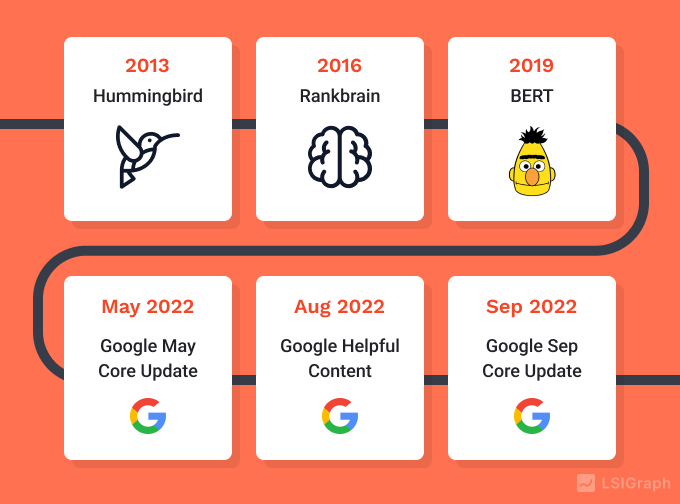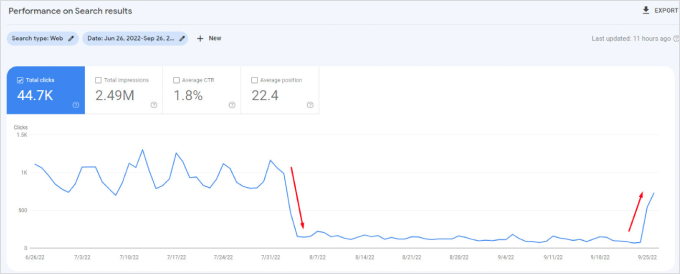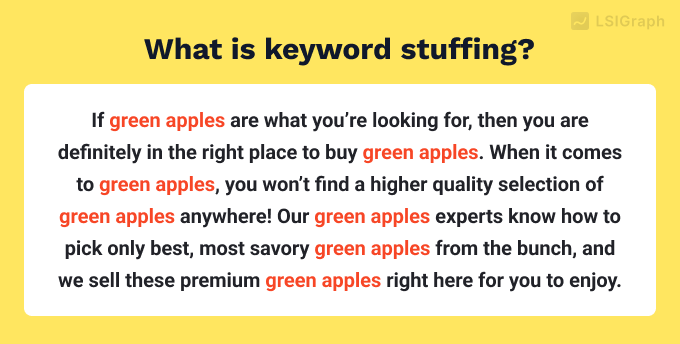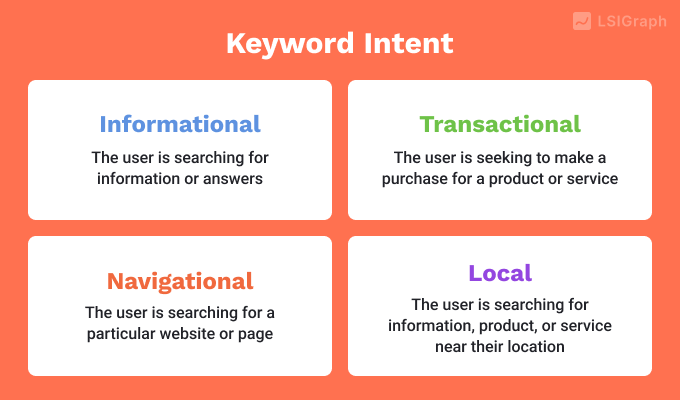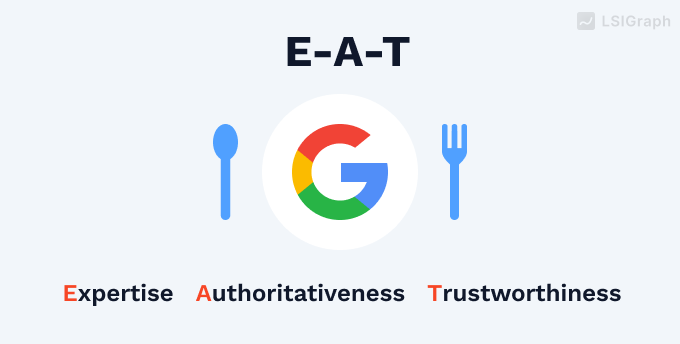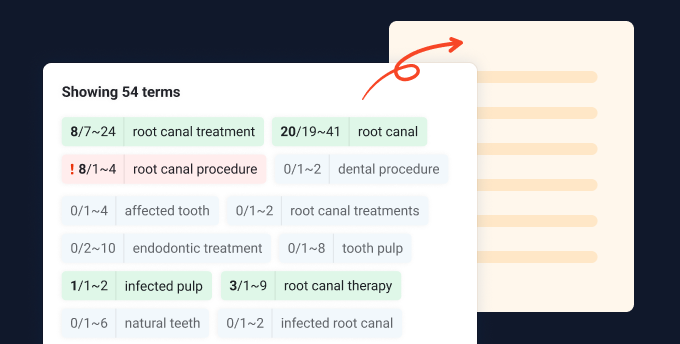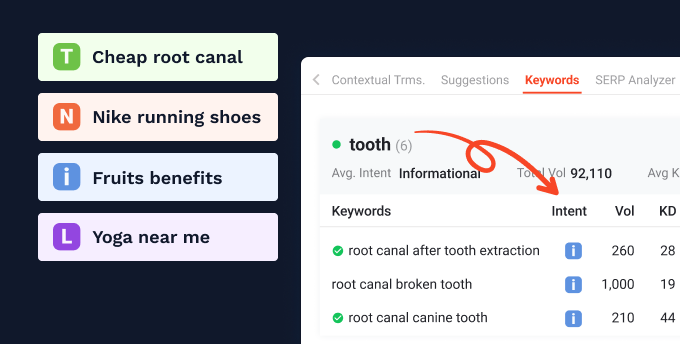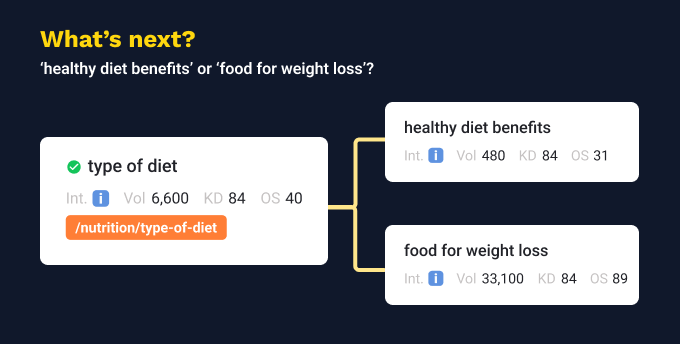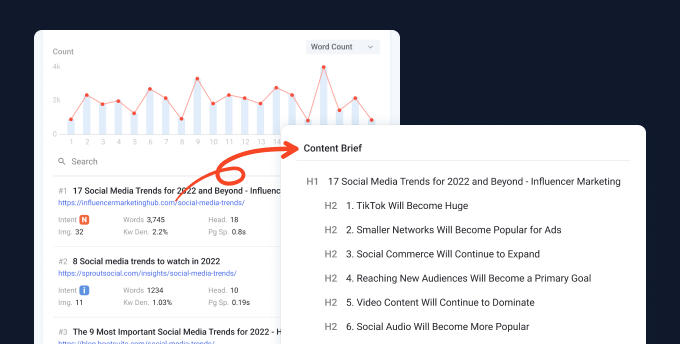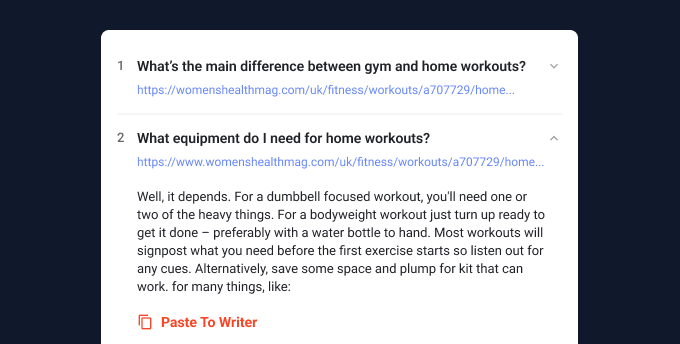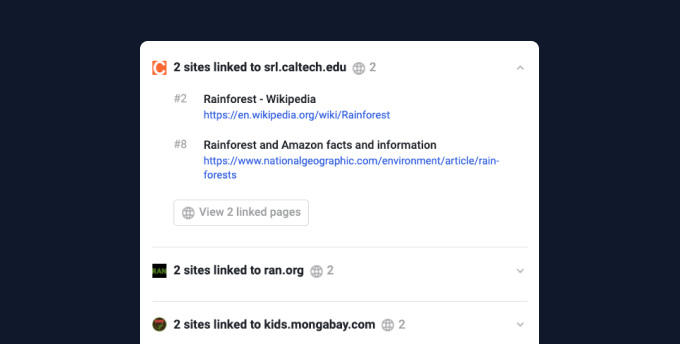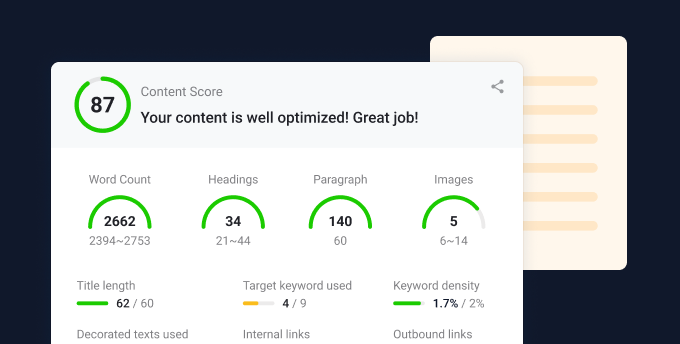If someone tells you that SEO is irrelevant or that an SEO person is nothing but a snake oil salesman, they may be on the wrong side of the revolution.
More than 90% of online experiences begin with a search. With nearly 4 billion Google users worldwide, what consumers want and how they search for information online varies greatly and constantly changes.
According to Google, its search engines see billions of searches daily, and 15% of those queries are ones they have not seen before. Therefore, it is apparent that Google’s biggest challenge is matching relevant content for each user.
Some food for thought:
“71% of Brits said that they found Google Search gave more relevant results than other search engines.“
Why do searchers flock to Google when there are many alternative search engines out there? To add to that fact, how does Google provide more relevant content as compared to other search engines?
Here’s how.
To recommend better content to their users, Google has continuously rolled out improvements to their ranking algorithm to improve the understanding of search intent and provide more predictability in how keywords match.
Google’s Commitment Towards Context
By introducing newer Google algorithms, Google has shown its dedication to bringing better results for its searchers by introducing RankBrain and Hummingbird to gauge the intent of search queries better. This was followed by Google rolling out the BERT update, which introduced a new algorithm that improved language understanding, particularly for more natural language/conversational queries.
Even in 2022, we see that Google continues to introduce new algorithms to fine-tune results provided to searchers.
You can see this through the introduction of the Google Helpful Content update, which brought a side-wide signal determining whether a website primarily has helpful content or the opposite. Once Google interprets your content, they will then downgrade websites that are merely designed to rank well on searches while promoting more helpful websites designed for humans above search engines.
Alongside the helpful content update, Google has already rolled out the September 2022 core update, which came immediately after the helpful content update. Danny Sullivan, Google’s Public Liaison for Search, tweeted that the core update might further supplement the helpful content update by amplifying its effects.
But, without any concrete proof, it is best to take these statements with a pinch of salt.
Google also introduced its May 2022 Core Update. According to Google’s Public Liaison for Search, Danny Sullivan, he noted the core update would make changes to improve Search overall and keep pace with the changing nature of the web.
Google is introducing these updates for the sole purpose of improving search results for users. These updates aim to improve the search experience for users, providing more relevant, useful, and trustworthy information for searches.
These are just scratching the surface of how LSIGraph has adapted to updates by Google. If you want to learn more, you can always read up on beyond LSIGraph.
How Do These Updates Affect You?
First and foremost, if you have always created people-first content without engaging in any black hat SEOs. I’m sure you won’t be affected much by the updates.
However, do expect some volatility in your website’s traffic due to Google’s updates.
Generally, webmasters would suffer a drop in traffic to the website. Still, if you have consistently created helpful and authoritative content for your readers, the traffic will eventually bounce back, so there is nothing to worry about.
Conversely, if you have constantly been churning out content meant merely to rank on search engines, then you would be heavily affected by these updates, especially the helpful content update.
You can see the chatter from SEO forums of people voicing out that the update affects their site traffic.
How Can I Create High-Quality Contextual Content?
Avoid Keyword Stuffing
Every webmaster’s dream is to have their website gain massive visibility on SERP. However, one critical mistake to avoid is keyword stuffing.
So what is keyword stuffing? In a nutshell, keyword stuffing is a weak and lazy way for certain webmasters to bombard irrelevant keywords into their website or content inorganically to gain high visibility on SERP.
Have you ever been on the receiving end of such sentences?
“Contextual terms are essential for your content. Why are contextual terms so important? This is because contextual terms help you build context for your articles. Contextual terms are the next big thing in SEO, and you should add contextual terms for your content.”
Not only do these websites look unnatural to readers, but they also go against Google’s content guidelines. Keyword stuffing has the consequence of being a negative ranking factor on your website, which will cause your site to rank lower on SERP. It also makes your content seem unnatural to your readers — a total lose-lose for you.
To rank your SEO page, ensure that you adequately and naturally add your keywords to your content. Ensure that you pick keywords with high traffic and low keyword difficulty to achieve the best results for your content.
A good rule of thumb is to have your keyword appear once every 50 words within the content. However, it can seem more when including alternative texts, meta tags, titles, and other content.
Know Your Niche’s Intent
You must always have your audience in mind when creating optimized content. Hence, you must understand your audience’s search intent and why they use specific terms and phrases to find their content.
Intents are an excellent way for webmasters to understand their audience and align their website’s content strategy. It can be divided into transactional, navigational, local, and informational. It can be further subdivided into more specific intents, but let’s not dwell too much on that.
By knowing your audience’s intent, you could put your audience as your top priority and understand what motivates them to click and share content online.
Use that information to understand how your audience thinks and use that information to determine their values, dealbreakers, needs, frustrations, objectives, and pain points.
Once you thoroughly understand your audience, you can write the best content for your audience.
Provide Accurate Information
Writing good content shouldn’t be a herculean task, but a lot of webmasters fail to do so. Poor content is one of the top SEO killers in the industry, and if not properly checked, it can lead to the decline of a website’s SERP ranking.
Good content means that your content would be able to provide reliable information for your readers, establishing your website as an authoritative website.
If you have been in the SEO loop, you would have probably heard of Google E-A-T.
According to Google’s definition, E-A-T stands for Expertise, Authoritativeness, and Trustworthiness. This definition comes from Google’s Search Quality Rater guidelines which outline the factors that Google uses to evaluate the overall quality of a web page.
How does Google determine E-A-T? This is determined through
- First, the expertise of the creator of the Main Content,
- Second, the authoritativeness of the creator of the Main Content, the Main Content itself, and the website
- Third, the trustworthiness of the creator of the Main Content, the Main Content itself, and the website
To ensure that your content is always helpful to your readers and to improve your E-A-T SEO, you should always keep your content accurate and up to date. Unless the content on your site is about something that never changes, there’s a good chance that you have information or even links on your page that are either obsolete or outdated.
Keep your content up with the most accurate information. This is particularly important if you have pages that are time sensitive, such as news or medical information.
Additionally, Google loves expert content. Therefore, demonstrating that someone with credentials and qualifications creates your content would go a long way in Google’s eyes.
Suppose you do not have the necessary experience. In that case, you can increase the credibility of your website by working with contributors with substantial real-world experience and knowledge in that field/niche.
Research Your Competitors
Competitor research is one of the most important things you can do for your website. I know that stealing other people’s work is wrong, but to be the best, you must learn from the best.
If you want your website to be more visible and rank higher than others in your industry, you would need to critically analyze your website’s strengths and weaknesses while also staying ahead of the competition.
By analyzing your competitors, you can see what makes them as successful as they are today and find out why Google loves their content enough to rank them at the top.
Spend time uncovering your competitor’s strategy and create a comprehensive content marketing strategy. Add your own research, information, and expertise to those content to outrank the competition and promote your new content to a similar audience to your competitors targeted.
Building Contextually Sound Content With LSIGraph
Add Contextual Terms To Your Content
To ensure that LSIGraph continues to adapt to Google’s focus on context, LSIGraph has introduced new features to help you build more context for your content.
Based on LSIGraph’s latest round of research, the team found contextual terms to be more impactful in SERP rankings. Hence, we have made it the emphasis of our writer by restructuring the content score calculation to put more weight on contextual terms.
If you haven’t noticed just yet 😉, we have also remanded the semantic writer to content writer as we move from a semantic-based scoring system to a more contextual one that aligns with Google’s focus and our own research.
Contextual keywords help you build context around your target keyword and content. By adding contextual keywords, search engines are more likely to understand the contextual relevance of your page.
This results in your page having a higher chance to rank for queries you want to rank for, getting you the quality traffic that you’ve always dreamed of.
Create Content That Match User Search Intent
LSIGraph also has a new classification model. The LSIGraph team developed this new model to identify users’ intent to integrate with BERT. Whatever the user intent (informational, transactional, local, or navigational), LSIGraph will display your list of keywords along with their right intent.
Having every keyword accompanied by their specified intent takes all the guesswork out of your content strategy. You can create content corresponding to the searcher’s query to provide the most relevant information and facts they are looking for.
Let’s say that I am searching for information through the keyword “Best Smoked Brisket in Tennessee,” there is no point in creating a how-to page on making brisket. By understanding that this keyword brings about a local intent, you would know that the searcher doesn’t intend to smoke his own brisket but is in search of the best brisket in town.
Map Out Your Content Strategy
Great webmasters always know what’s next and what to write next. Is this because they are simply better at writing? Do they just have more experience in the field?
I’m here to tell you that while those play a part in how you brainstorm content for your website, there is another more important factor in creating a successful website: proper planning.
I can’t imagine an army general winning a battle simply by “winging it.” Great webmasters plan their content at least a few months in advance. They plan out content that drives profitable traffic for their site through in-depth research, careful planning, and developing a thorough SEO content strategy.
LSIGraph’s keyword mapper helps you cluster your keywords into content silos equipped with important information that you need for each keyword, such as intent, volume, and Opportunity Score.
Arrange your keywords into content silos by simply dragging and dropping keywords in your projects to set up the structure of your website and plan potential pages/content.
Map your keywords into main categories and sub-categories, and never miss out on a content opportunity again!
Secondly, you can now bolster the context of your content with topical clusters. LSIGraph has developed another algorithm that functions to pinpoint the entities that are within keywords. By pinpointing entities within keywords, LSIGraph will then create clusters of relevant keywords based on the identified keywords, which results in what we call topical clusters.
Content that uses keywords in these topical clusters tends to be viewed more positively by Google as it allows their algorithm to detect semantic relationships between different segments of your content, building more context.
Analyze Your Competitors
Too often, we are fixated on managing and creating content that we think would serve our readers the best. But if you fail to see what works and what doesn’t, then all your efforts will be for nothing. Hence, to create content that gains massive visibility and ranks well, competitor research is a must.
Have you ever tried analyzing top-ranking competitors with the SERP analyzer? Let me tell you that you are missing out if you have not.
The SERP analyzer breaks down top-ranking competitors to provide you with insights such as their word count, paragraphs, keyword density, page speed, readability, and more.
Skip all the hassle of visiting each competitor’s website individually. Save your time and effort on more profitable things.
With the SERP analyzer, you would also be able to access content briefs of your competitors, which are quick summaries of the HTML structure for each of the top-ranking pages.
Speed up your content optimization process by allowing you to study the structure of the top-ranking pages without having to visit each individual site. Clicking on the individual rows of SERP results will bring you to the in-depth content brief of the result.
Accurately Answer User Search Queries
As much as your readers love a well-written piece of content, they also want their questions to be answered. Hence, you should always strive to answer questions that searchers may be looking for.
According to experts, it is best to get to the point and answer your reader’s burning questions within the first few paragraphs of your content. This way, you can capture your reader’s attention by giving them the information they want to hear.
Only after answering their questions should you go into more detail and examples. Besides yielding SEO benefits, using this method means you will be placing your keyword in the first paragraph, thereby increasing your keyword prominence and making it easier to be found by the search.
Unsure of what questions to answer? LSIGraph’s content writer shows you popular questions that have been extracted from top-ranking pages to be included in your content.
Click on the popular questions tab in the Writer and find out all of your audience’s burning questions in an instant.
Link To The Right Content
SEOs are always talking about how essential it is to have a comprehensive backlink structure for your website. However, only some web pages have the privilege of being constantly linked, especially if you are just starting out in the industry.
Press releases may be a great alternative, but constantly relying on press releases is costly unless you find a newswire that gives you affordable plans with decent coverage.
How can you overcome this? One way is to ensure that you are producing original content that improves upon your competitor’s content. After which, you can use LSIGraph’s frequently linked tab, which shows pages that top-ranking pages are linking to.
By creating better content, you would put yourself as the top contender for these sites to link to as opposed to your competitors because of your superior content. Additionally, you can also boost your content’s authority by linking to those same pages.
Create SEO-Optimized Content
To have your page gain maximum visibility, you would not only need to optimize your page for your audience but also for search engines.
How can you optimize your content SEOs? I have just the solution for you.
You can now find out how to improve your content’s SEO with the content writer’s Dynamic Suggestions, which uses the top 10 results as a benchmark, analyzes your content, and provides you with all the suggestions and recommendations you need to leapfrog your competitors.
Additionally, LSIGraph’s content writer now has a content scoring system that updates in real time. As you write your content, the scoring will reflect how SEO-optimized your content is. Continue to improve your content using our suggestions and recommendations, and see your content score improve.
Keep improving your content until you’re satisfied with your content, post your content, and watch it soar to the top of SERP.
Conclusion
It is important to understand that writing great content requires a lot of research, planning before writing, and constant audit even after your content has been posted up. Ultimately, it is rewarding to do all these steps as your content will rank well on SERP, and your content will gain great visibility.
To make the content writing process easier, simpler, and time-saving, LSIGraph has numerous tools that you can use in the Content Writer, from the newly added contextual terms to SEO optimization suggestions for your content.
Subscribe to LSIGraph and solidify yourself as one of the content-writing greats!




